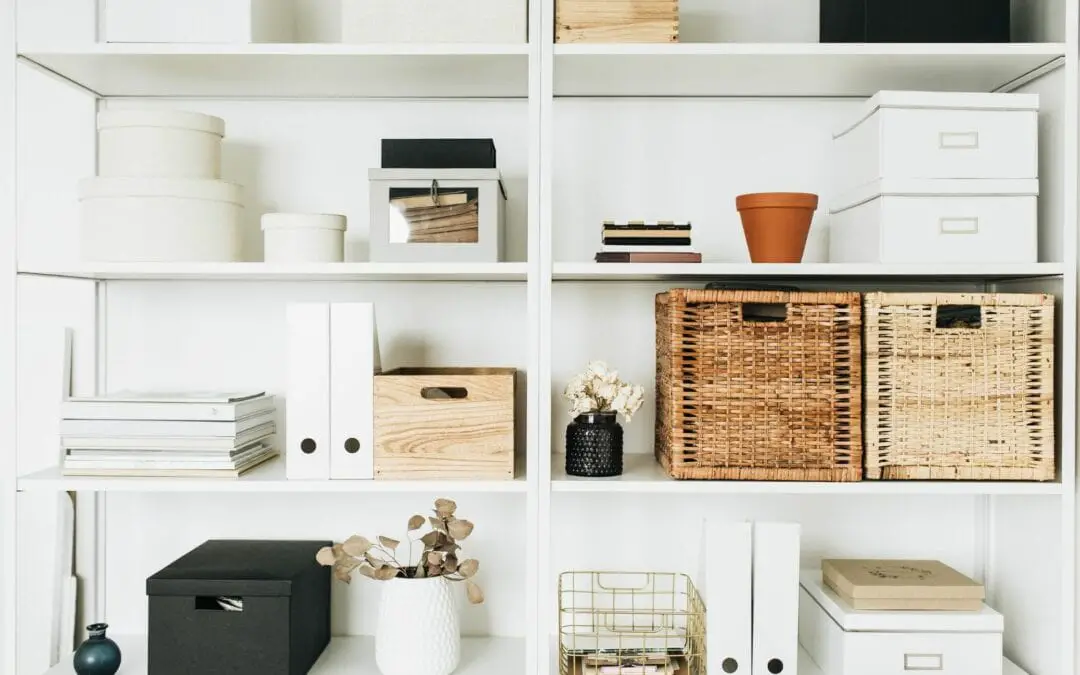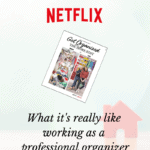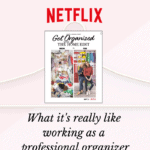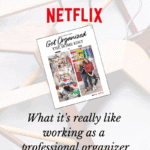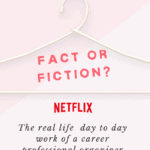Have you watched the latest organizing show on Netflix with The Home Edit ladies? If you are considering working as a career professional organizer, please watch the show and then read my blog as a post-show wrap-up.
I’m sharing with you the realities of working as a professional organizer when the cameras are not rolling. Some things I do very differently, and you may do differently, too, in your business, depending on your niche and clientele.
I just finished watching Netflix’s Get Organized with the Home Edit. During the show, I was constantly having one of two feelings. Either a feeling of: “yep I know what that’s like, that happens to me all the time,” or “why are they doing it that way? This seems really strange.”
So first let’s start with the FACTS, what it’s really like to work as a professional organizer as seen on the show Get Organized with The Home Edit.

Fact: People will want to keep things they no longer want, but wish to sell.
You may have clients who need specific storage for a shipping station like Retta’s Poshmark store. But with average folks just storing things up for a yard sale, you may want to have a tough-love conversation with them about if and when they plan to actually sell the items or if they are prepared to spend money on storage and having you organize them professionally. It could be a stalling technique as they are facing some other issues like shame or guilt towards letting something go.
Fact: Be prepared to store sentimental items.
People keep items that they will never use for sentimental reasons. The Home Edit did a good job showcasing storage solutions for sentimental items like art boxes and shadow boxes. You will very likely encounter sentimentality with your clients who struggle with organization. So be prepared!



Fact: It’s important to check the expiration dates on perishable food items and cosmetics.
You can get permission from your client ahead of time to toss these items during the sorting period. Shameful, but true, organizers secretly hope items are expired when working in extremely cluttered kitchens and bathrooms because it is a fast way to declutter. Some clients will want to keep expired items claiming that they are not harmful to use, but it’s a clear indication that the consumable has not been used in many years, otherwise, it would not have expired.
Fact: Fixed Shelving is an absolute pain.
When you are working in custom closets the installer will often put in a fixed shelf for stability and it will be hidden among other shelves that you can adjust. Organizers will often adjust shelving to maximize vertical space, so having shelves that you cannot move is a real pain. The Container Store Elfa system that is also featured in the show is a wall-mounted system that is more flexible to work with and therefore a favorite with organizers.
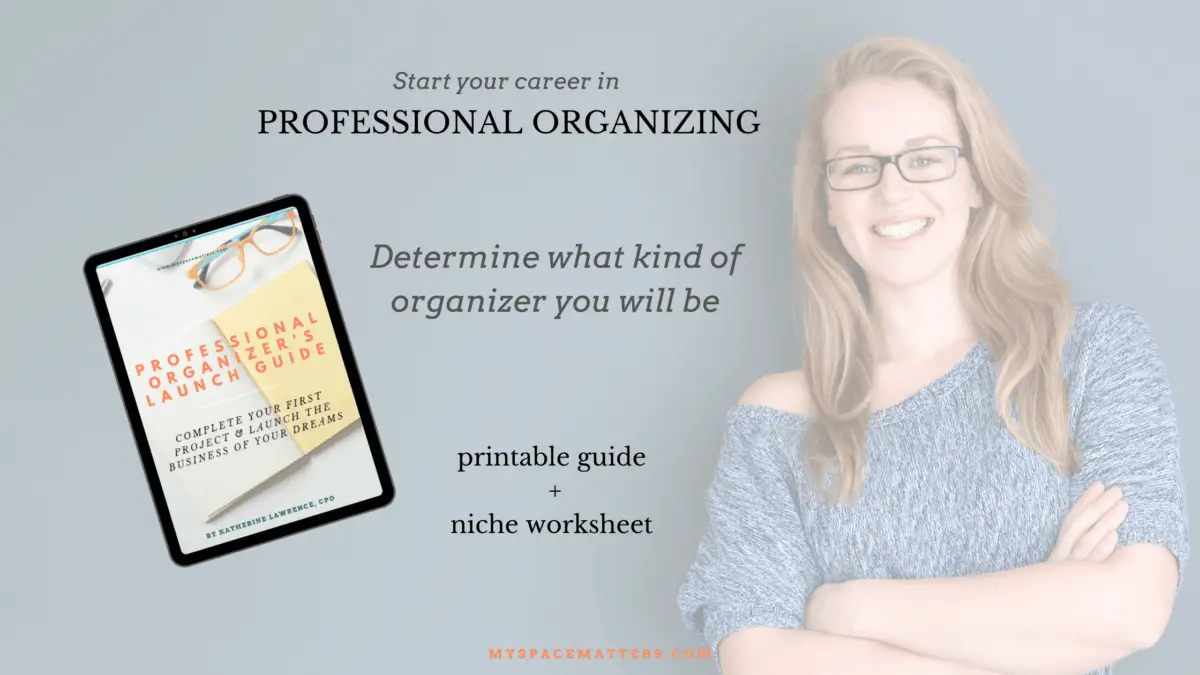
Fact: Getting correct measurements is tough.
Just like carpenters who say measure twice, cut once, it’s also true for Professional Organizers who want to move furniture, bookshelves, and other storage pieces around in a room or closet. It can be frustrating when things don’t quite fit the way you planned like in the Doctor’s Dream Closet/ Episode 1. If I’m with my client and we are moving things around in the room I like to say “let’s just see how this looks” instead of getting too attached to a floor plan before I see how things fit.
Fact: Your clients may need maintenance sessions.
High volume consumers, growing families, and compulsive shoppers outgrown organizing systems very quickly. I liked that they went back into Rachel Zoe’s closet to address reworking the space because of all the new items. Rachel Zoe has no intention to stop buying clothes, which will be the case for your clients if you work with this demographic. If this is your target market, be prepared to offer maintenance or touch up services.
Do not be surprised when your client outgrows or “messes up” the system you put in place. Do not take it personally, it’s just that these systems only work if your client maintains that balance between bins and stuff. Just know that there is a population out there who will continue to make new purchases and need organizers to help them maintain a system of order. Some professional organizers love this kind of work and others despise it. It’s good to know which kind of Professional Organizer you want to be and design your business around this preference.
Fact: Set goals and make a plan with your clients first.
The timeline of the organizing process looked really crunched on TV, but the organizers were setting goals ahead of time and consulting with their client before they began sorting. They also focus on one category or area in the home for each project. In my coaching program, I help students design a client process that includes consulting, creating action plans, and follow a method called GDP. You only see little snippets of the client process in the show. Just be aware that the organizers are not just showing up at the house jumping in to organize, they are planning first and working on distinct projects.
Side note: For me, Sumner, the red-headed organizing assistant, is the real star of the show. As a Professional Organizer, I’m not that dazzled by plastic storage containers or impressed with how spaces are transformed by redesign because I’ve been in that world for a long time, I know. But I always paid extra attention to the screen when Sumner showed up because she provided comic relief. I don’t know if she works as a comedian or writer on the side, but her dialogue was gold and made the show very entertaining.

OK so let’s take a look at things I’m calling FICITION. Things probably did just for TV magic, or paid partnerships, or because the program only showcases one type of service offered by Professional Organizers with an emphasis on storage and redesign.
Fiction: Organizing projects need to be completed in one day.
I get asked a lot: “how can you sort, help your client declutter, and have products ready all in the same day for an organizing session?” In real life, I have days, weeks, even months to complete projects. I need to keep in mind my client’s stress levels and their budget while also managing factors outside my control like the timeline of related products and services such as haulers, contractors, closet installers, donation centers, and retailers. So please do not stress and think that you have to complete all these steps in one day (unless you are filming a TV show?)
Fiction: You have to be a storage expert to be a Professional Organizer.
When I’m coaching aspiring organizers or someone struggling to find clients for their existing organizing business, we talk a lot about niche marketing and painting a visual picture of the type of jobs they want to do and clients they want to work with. Your branding must attract your ideal client. If you want to help people downsize, or coach people on the underlying causes of accumulation, or help them eliminate things that do not spark joy, there are many specialties within the Professional Organizing world where you do not spend much time shopping for or installing products. If you work with me as your coach we will craft a niche that fits the kind of jobs you want to do and the client you want to work with. Just know that there are lots of different kinds of Professional Organizers.
Fiction: Buy organizing containers first.
I’ve said it before and I’m sticking to it! Professional Organizers should work with their clients to declutter before buying containers. Otherwise, you end up buying the wrong product and containing things that your client should not be keeping in the first place. At the end of my decluttering jobs or KonMari sessions, we are often left with a pile of empty containers.
Please understand that what you’re seeing on Netflix is a planned and intentional partnership between The Container Store and The Home Edit. The Container Store stock shares have increased sharply since the airing of the show. This is good news in my city where the opening of a Container Store was planned pre-COVID and then did not open as expected.
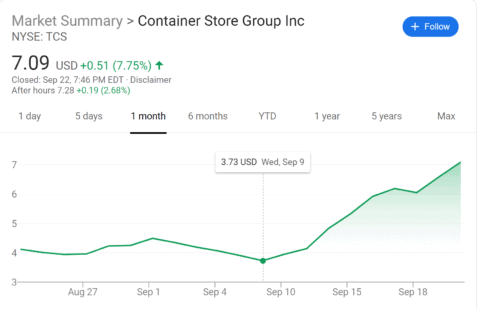
Fiction: Organizing jobs are frantic.
I have worked on lots of projects over the years where my clients have installed closet upgrades and secured products from The Container Store, Target, Ikea, and other retailers. The projects were completed in a systematic way without a lot of drama and stress. You’ll be able to do the same following a proven method of project management while working at a pace that you and your client agree upon during your initial planning. Drama just makes for interesting TV, but you do not need it to complete your organizing projects.
Fiction: Your client does not need to participate in the transformation.
If you want to teach your client how to organize or enlighten them on the underlying causes of the clutter in their home, you can choose to work with people who are present during your sessions.
If a prospective client called me today and said they don’t want to be a part of the process and can I just put their stuff in nice containers while they are not home … for me, this is not an ideal client. For you, that maybe your perfect client. Which is why I’m often working with my coaching students on attracting their ideal client and designing their unique brand.

